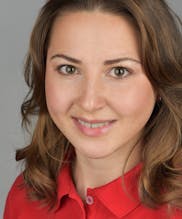
A good hand is the most important tool of the physiotherapist trained in manual therapy. With the hand (manus in latin) the therapist scans your joints, muscles and tendons. They are able to sense blockages and painful tension.
The hands are not only an instrument for examination, but also for treatment. With special hand movements the therapist tries to loosen movement restrictions and relieve pain. Sometimes the vertebrae and joints may crack. This does not hurt and does not cause harm either. The manual therapy is a painless, gentle technique.
Manual techniques have been known in all cultures for thousands of years. In ancient times, back pain was treated with various grip and massage techniques. Hippocrates described vertebral displacements and indicated how these could be corrected with the so-called traction technique. In the Middle Ages there were countless “bone adjusters” and “limb setters” on the way – medical laymen who took care of complaints that were neglected by the doctors of the time.
Manual therapy has developed into a recognized part of medicine
In modern times, the healing power of targeted manipulation techniques fell into oblivion. In the 19th and early 20th centuries, however, manual techniques first became more popular in the USA and then also resurfaced in Europe. Since the Second World War, more and more orthopedists and general practitioners have been using manual medicine, which has developed into a recognized part of medicine.
At the same time, more and more alternative-oriented practitioners have claimed to be able to cure all kinds of ailments with manual techniques, including gastrointestinal complaints, developmental disorders and psychological problems such as depression. The fact that these treatments work has not been scientifically proven.
Our therapists have a good hand, but no magic powers. Within the scope of manual therapy, we therefore limit ourselves to the treatment of disorders and diseases of the spine and joints. These include, for example, back and neck pain.
Injured tissue at the beginning of therapy is often not strong enough to work on the strength equipment. Joints and muscles must therefore first be mobilized passively, i.e. by the therapist’s hands. Manual therapy is therefore a component of many physiotherapeutic treatments.
Manual therapy is used for:
- reversible dysfunctions
- movement restrictions
- arthrosis
- spinal discomfort
- rheumatic joint complaints
- joint contractures
- palsies
- pain syndromes
- sports injuries
- movement restrictions after immobilisation
- reversible dysfunctions
- movement restrictions
- arthrosis
- spinal discomfort
- rheumatic joint complaints
- joint contractures
- palsies
- pain syndromes
- sports injuries
- movement restrictions after immobilisation
Links to the topic:
Our physiotherapists
Alternatively, we also offer video consultation.















































































